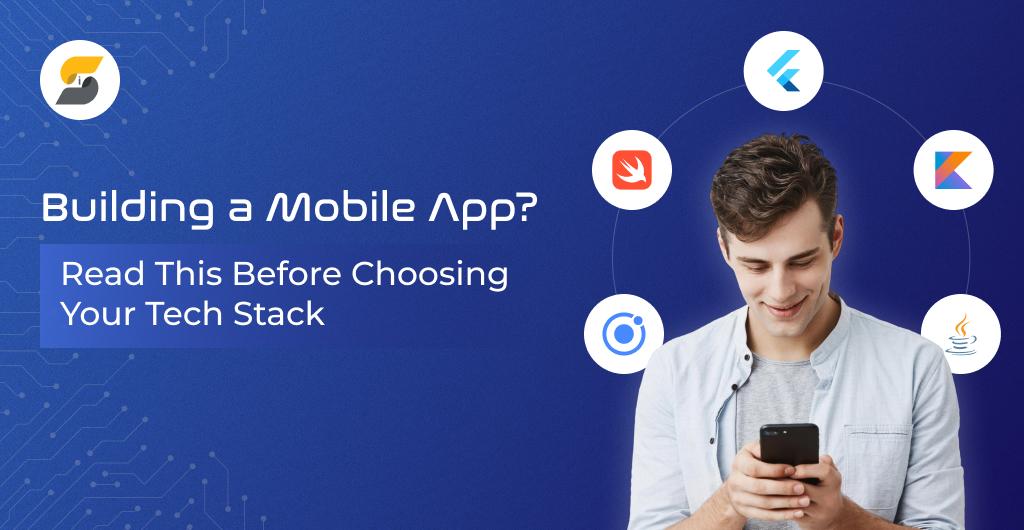01 August, 2025

In today’s fast-paced digital industry, building a mobile app is no longer optional—it’s a strategic move that can transform how your business operates, connects with customers, and drives revenue. But before a single line of code is written, there’s a critical decision to make: your app’s tech stack.
Choosing the right tech stack can determine your app’s performance, scalability, time-to-market, and future maintenance costs. One of the biggest questions businesses face early on is:
Native or Cross-Platform?
This blog will guide you through various mobile development approaches' pros, cons, and use cases, including insights into popular frameworks like Flutter and React Native. If you plan to launch a mobile application soon, keep reading—this could save you time, money, and future headaches.
Mobile users expect apps to load instantly, run smoothly, and feel intuitive—regardless of whether they use iOS or Android. The tool you choose can influence:
With rising competition—and user patience getting shorter—your stack choice is strategic nowadays.
At the heart of mobile development is this major fork in the road:
So, which is right for your project?
Let’s break it down.
Why go native in 2025? Because precision matters—especially when building apps where user experience is non-negotiable.
1. Best-in-Class Performance
Native apps are faster. Period. They’re compiled specifically for their platform and access system-level APIs directly. That makes them the go-to for performance-heavy apps like:
2. Deeper Device Integration
Need complete control over GPS, camera, sensors, or background services? Native development offers unrestricted access to platform-specific hardware and features.
3. Fewer Dependencies
You’re relying directly on Apple’s and Google’s SDKs. That means fewer third-party bugs and faster adoption of new OS features.
4. UI Consistency
Native UI components follow platform guidelines perfectly. That means your app will “feel” at home to your users.
Downside: Higher costs and longer development timelines, since you’ll need separate codebases and potentially two development teams.
Cross-platform frameworks are evolving rapidly. In 2025, Flutter and React Native will lead the pack, delivering native-like experiences with less time and cost investment.
Here’s why teams love them:
1. Faster Time-to-Market
A single codebase means 30–40% quicker development cycles. Launch your MVP faster, test the market, and iterate quickly.
2. Budget-Friendly
Why hire two development teams when one can do the job? Cross-platform cuts dev costs, ideal for startups and businesses with lean budgets.
3. Consistent UI/UX Across Platforms
Modern frameworks offer shared design systems, responsive layouts, and flexible styling options. Your brand looks the same—everywhere.
4. Rapid Testing and Updates
Hot reloading and unified QA cycles simplify testing. Bugs fixed once applied across platforms.
Both are powerful, but which one is better for your use case? Let’s explore deeper.
Language: Dart
UI Rendering: Own engine (Skia)
Use Case Fit: Startups, MVPs, e-commerce, enterprise dashboards
Why teams love it:
New in 2025: Flutter 4 brings enhanced performance, better web support, and embedded platform capabilities. It’s becoming a full-stack UI solution beyond mobile.
When to choose Flutter:
Pro Tip: Flutter is especially good when your app’s design is custom and doesn’t heavily rely on platform-native behavior.
Language: JavaScript/TypeScript
UI Rendering: Native widgets + JavaScript bridge
Use Case Fit: Content-driven apps, social platforms, chat apps, internal tools
Why teams love it:
What’s new in 2025: React Native has matured significantly with performance boosts, improved bridge speed, and modular architecture (via TurboModules).
When to choose React Native:
Caveat: While UI looks and feels native, heavy animations or ultra-custom UI might perform better in Flutter.
“Hybrid mobile app” typically refers to frameworks like Cordova or Ionic, which wrap web code (HTML/CSS/JS) within a WebView. While similar to cross‑platform, hybrid apps often fall short in performance and UX fidelity compared to Flutter or React Native.
In contrast, modern cross‑platform app development compiles to native widgets and uses real native views or optimized rendering engines, offering much better UX and speed.
| Criteria | Native | Cross-Platform (React Native, Flutter) | Hybrid (WebView) |
|---|---|---|---|
| Performance | Best | Good | Mediocer |
| UI/UX Fidelity | Best | High( Requires Tuning) | Basic |
| Single Codebase | No | Yes | Yes |
| Time to Market | Longer | Faster | Fast |
| Cost | Higher | Moderate | Low |
| Access to API/ Device Features | Full | Good, with modules | Limited |
Choose native development if:
Opt for cross‑platform when:
The consequences of choosing the wrong tech stack aren’t just technical—they’re financial:
Selecting the right stack ensures:
It’s not just about “building an app”—it’s about building a digital product that evolves with your users.
The decision between native and cross‑platform app development is not about right or wrong—it’s about right for you. Performance, budget, timeline, team expertise, and future roadmap—all shape your ideal strategy.
If your goal is rapid scaling, cross‑platform frameworks like React Native or Flutter offer tremendous advantages. But if your app’s success depends on platform polish, peak hardware access, or advanced features, native development is the gold standard.
At iSyncEvolution, we don’t just write code—we build scalable, reliable, and user-focused mobile solutions. Our team has delivered successful apps using native and cross-platform technologies, including Flutter and React Native.
Whether you're a startup with an MVP dream or a growing business seeking digital transformation— We help you build smarter, launch faster, and scale endlessly.
Ready to start your dream project?
